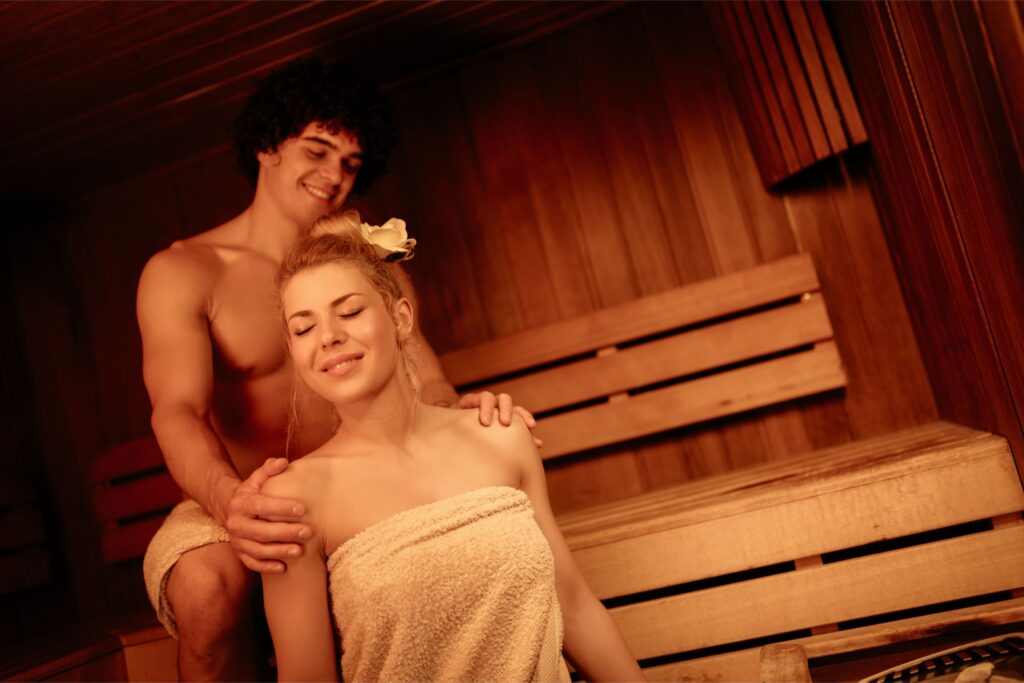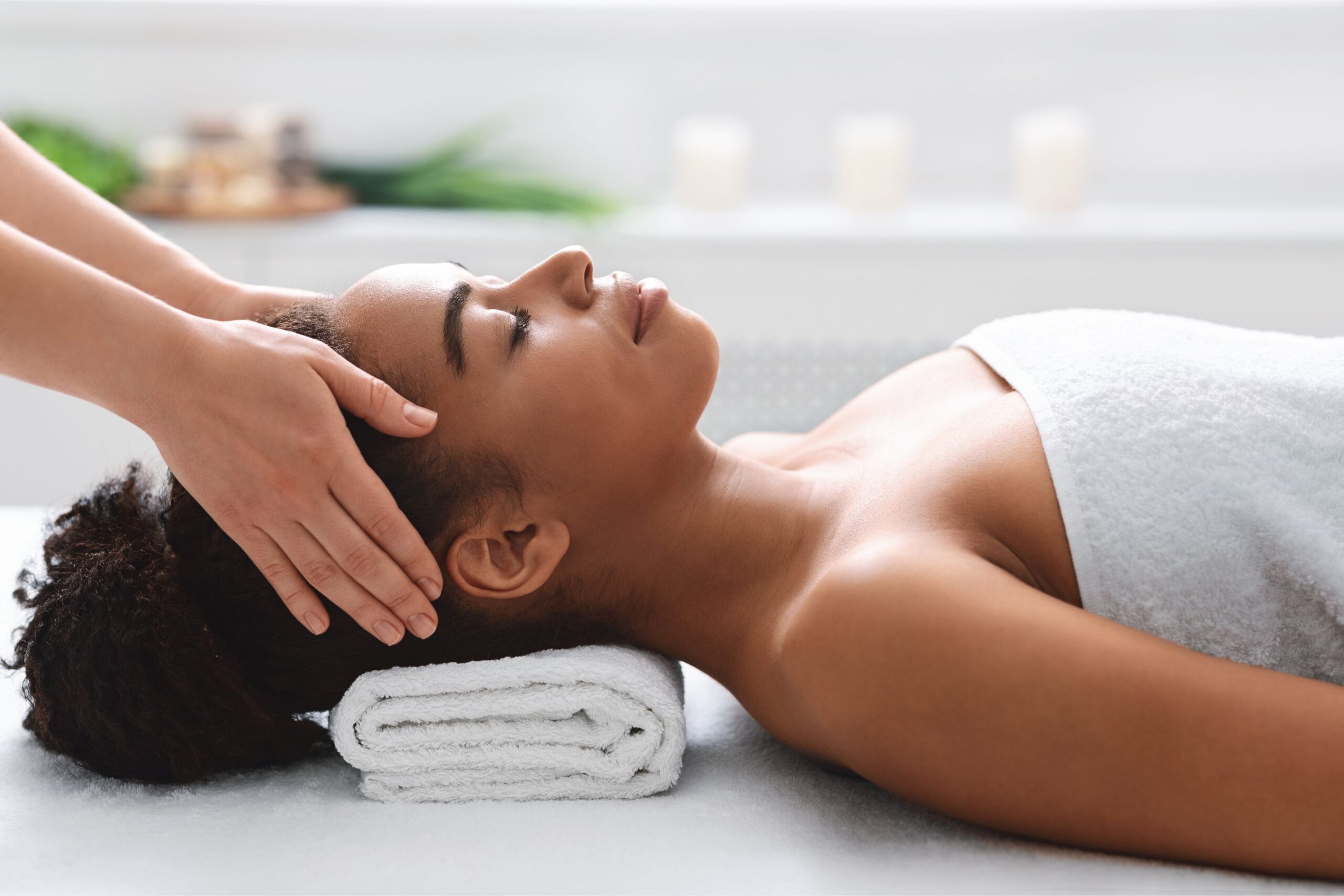Both saunas and massage can be experiences that render an individual into states of sublime relaxation, and they are both wildly beneficial for health for a multitude of reasons. The unification of sauna and massage may have exponentially positive effects on human physiology. If you are a massage therapist and are considering bringing a sauna into your practice, this article will help you better understand the scientific reasons to merge these two modalities. Conversely, if you are a sauna user who receives massage, you will uncover valuable information on how you can supercharge your next massage session using the sauna!
An examination of the health benefits of both sauna use, as well as massage, demonstrates that the two healing forms have very many overlapping results, although the means to these results varies significantly from one to the other. Is there any point in combining treatment activities that have seemingly very similar results? Or, if you are doing one regularly, is it worth adding the other?
This article will demonstrate why massage and sauna make a natural partnership, and how you can use both of them in tandem to achieve your health and wellness goals.
What Are Some of the Shared Benefits Between Sauna Use and Massage?
Massage & Sauna Sauna Only Massage Only
| Massage & Sauna | Sauna Only | Massage Only |
| Quality Sleep | Heat Shock Protein Production | Digestive Disorders |
| Fibromyalgia | Cardiovascular Workout | Scar Tissue |
| Improved Circulation | Photobiomodulation (near infrared) | Nerve Pain |
| Depression | Detoxification | Post Operative Care |
| Relaxation | Heart Rate Variability | Strains & Sprains |
| Sports Injuries | Hormesis | Area Specific Stimuli |
| Post Workout Recovery | Improved Pulmonary Function | Body Contouring |
| Flexibility | Heat Induced Bio-chemical changes | Connectivity |
| Decreased Inflamation | Skin Rejevenation | Lowers Heart Rate |
| Improved Immunity | Improved T-Cell Production | Relaxing tissue |
With so many overlapping benefits between sauna use and massage, you may wonder – why do both? In reality, the two modalities are significantly different, though complementary. There are benefits derived exclusively from massage that cannot be garnished through sauna use alone, and vice versa.
Ideally, if an individual or a clinical massage therapist is able to, the two modalities would be used in tandem to enhance the overall benefits to the patient or client.
Sauna use, for the most part, is something that can be done up to 7 times a week, and this is (generally speaking) not recommended for massage, particularly when addressing postoperative care, or other specific injuries. What this means is that when you do choose to receive a massage you can exponentially increase the overall positive impact on health by using a sauna on the same day.
How Can Saunas Improve the Efficacy of a Massage?
- Transference of the autonomic nervous system into states of relaxation
- Increased uptake in heat shock protein production
- Improved circulation
- Muscle pliability
During every sauna session a cascade of biochemical reactions occur within the body’s systems. The extent of the positive changes that occur while in a sauna continue to be studied and researched in fields of biomedicine as a litany of positive reactions continue to be discovered regularly.
When using a sauna, the “switch” between the autonomic nervous system’s division from hyperarousal to states of relaxation is easily glided, and an individual will emerge from a sauna session relaxed, with a body ripened for healing. This means that as soon as a massage session begins, the deep work can already start to take effect as the individual will not need to be coaxed into relaxation, since the state will have already been found in the sauna. (Provided that a sauna session was taken first).

Heat shock protein production is escalated during each sauna session, which means that these microscopic protein chaperones have been released, and are therefore incorporated into the full body circulation via a massage or other similar healing modality (acupuncture, chiropractic work, or physical therapy). (2)
If we consider blood moving throughout the body as an interconnected system of waterways, then a sauna is like releasing a dam, and the massage is like tenderly sculpting the river beds into even more specific avenues.
The heat of a sauna affects muscle pliability, so if an individual takes a sauna before a massage, then the muscles will have already been tenderized for the massage. Furthermore, muscles will be rendered more flexible after the heat of a sauna and will be more open to the manipulations of the massage.
Sauna use prior to a massage helps to move the body out of states of hypervigilance (i.e. sympathetic dominance of the nervous system, or fight/flight/fawn/freeze) (3), into states of relaxation where the body’s natural healing mechanism can begin to engage in impactful ways. Using a sauna before a massage allows for an uptake in positive chemical reactions such as the production of heat shock proteins to improve the quality of blood, before an extensive uptake in circulation.
Should You Sauna Before or After Massage?
In order for the efficacy of sauna and massage use in tandem to truly be experienced, it is important for the order of operations to be clearly followed. In almost all cases it is best to sauna prior to a massage. In doing so, much of the initial work on the table for a massage therapist can already be accomplished in the sauna, and this will allow for a deeper treatment during the massage.
Rather than spending the first portion of the massage encouraging the client to relax, a sauna can do this first, and the real magic of the massage can begin immediately. The improved circulation that occurs in a sauna as a result of exposure to heat means that the initial uptake in circulation does not need to happen manually by the massage therapist. If blood is flowing in a very robust way before the client lays down on the table then blood flow to the desired areas of the body inorder to reduce inflammation can happen more readily.
What Is the Best Way to Use a Sauna in a Clinical Setting?
If you are a massage therapist and have brought a sauna into your clinic, or if you are someone engaging these two therapies on your own, you will want to follow this protocol for the best results.

Take a sauna at a temperature that will induce sweating, but without the risk of dehydration. An individual should stay in the sauna for about 20 minutes (depending on the type of sauna being used, an infrared sauna can be used for a longer period of time). After the sauna, the individual should take a brief shower, not too long should be spent between exiting the sauna and laying on the massage table. This means that a shower should be available for immediate use. A tepid, or short cold shower can be taken to wash away the sweat and any bacteria on the skin, but this is not the time to take a long shower that involves exfoliation, and hair washing, as this can be done after the massage.
After a short shower, water, or an electrolyte beverage should be consumed before lying down on the massage table.
After the massage, a more indepth shower can be taken, and the client should be encouraged to consume substantial amounts of re-hydrating fluid. Instead of rushing out, the client should spend some time in a room where they can relax and integrate the benefits of both modalities.
How To Find a Massage Therapist
Take some time to find a massage therapist that has a sauna, either traditional or infrared, in their practice already, or if you have a sauna in your home, potentially find a clinician who is able to come to your home for the massage (if you feel safe and comfortable doing so).
Make sure that you find a licensed massage therapist with a good reputation and one that you feel comfortable to relax with.
Here is a basic guide from the Mayo clinic on what to ask for when looking for a massage therapist:
Don’t be afraid to ask a potential massage therapist questions such as:
- Are you licensed, certified or registered?
- What is your training and experience?
- How many massage therapy sessions do you think I’ll need?
- What’s the cost, and is it covered by health insurance? (1)
Take your time finding a therapist that works for you. You are never obliged to stay on a massage table if you feel unsafe, or even have the slightest inclination that you should get up and leave. Always follow your intuition, and be sure to vet your massage therapist well.
Sauna and Massage: An Ideal Marriage of Healing
In a perfect world everyone would be able to take a weekly sauna followed by a massage. If you are a clinical massage therapist and are able to also offer a sauna to your clients, you will be enhancing your treatments significantly.
Be sure to hydrate well if you plan on using a sauna alongside a massage, and remember that in order to truly benefit from the union of sauna and massage it is important to take your sauna first. Be sure to follow the protocol above, and take a short shower between sessions to keep the body, and muscles warm for the massage.
Take your time and find a massage therapist that is licensed and one that you feel comfortable with. During a sauna session as well as a massage the body is in a compromised and deeply vulnerable state so always ensure that your safety comes first!
Sources Cited:
- https://www.mayoclinichealthsystem.org/hometown-health/speaking-of-health/benefits-of-massage-therapy
- https://www.foundmyfitness.com/topics/sauna
- https://www.nccih.nih.gov/health/massage-therapy-what-you-need-to-know
- Complex PTSD: From Surviving to Thriving, Pete Walker, 12-2018,
- https://newsinhealth.nih.gov/2012/07/massage-therapy


